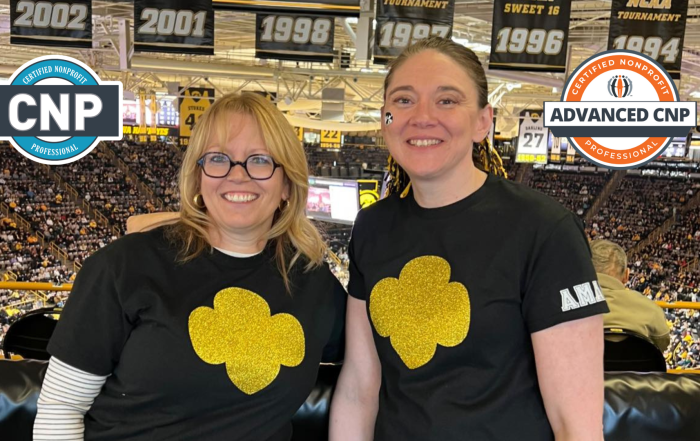The most successful fundraisers put the “fun” in fundraising, which is why a-thons are so popular among schools and nonprofits. It doesn’t matter if you’re an elementary school teacher raising funds for an afterschool program or a nonprofit fundraising professional looking for new ways to power your mission—anyone can organize a lucrative and engaging a-thon event!
There are many types of a-thons to choose from and plenty of room for creativity. Whether you decide to go for a tried-and-true event, such as a Read-A-Thon, or a lesser-known idea like a hula-hoop-a-thon, having a clear strategy from the start is key to maximizing your fundraising results.
In this quick guide, we’ll cover the essentials and tips for making your next a-thon a resounding success.
How Do A-Thon Events Work?
During an a-thon fundraising event, participants engage in a specific activity or challenge while collecting funds from friends and family who want to show their support. The process typically involves these basic steps:
- Participants sign up for your event. They set up personalized fundraising pages, sharing their stories and fundraising goals with friends and family.
- Participants collect donations. Their loved ones either make a one-time donation or pledge to give a certain amount per activity completed—for example, $1 for every minute they spend reading.
- Participants complete the designated activity. When the a-thon begins, participants try to engage in the activity for as long as possible—such as reading as much as they can in two weeks.
- Your nonprofit receives the funds raised. During and after the a-thon, your nonprofit receives the one-time and pledged donations that participants secure from their friends and family.
Let’s walk through an example of an a-thon in action: Let’s say you’re hosting a Read-A-Thon for a middle school. You’ll start by finding a fundraising platform where students can set up their individual donation pages. Then, you’ll promote the event to your school’s community. Students choose their own reading material and read as much as they can during the fundraiser, and as they log their time, their friends and family make donations to your school to cheer them on. It’s that simple!
What Are the Benefits of A-Thon Events?
A-thons provide a highly engaging and repeatable fundraising framework that delivers many benefits to your organization, including:
- Increased engagement. When people volunteer to participate in your a-thon, they get the chance to take an active role in your fundraising efforts. As a result, they’ll naturally feel more deeply invested in your event’s success.
- Wider reach. A-thons allow you to expand your audience by tapping into each participant’s social network. Since their friends and family are already invested in the participant’s success, they’ll be able to convince more people to contribute toward your fundraising goal.
- More meaningful support. Is your community fed up with buying fundraising products? Ditch the popcorn and cookie dough! A-thon events focus on fulfilling personal goals, such as fitness or learning, which many people are happy to stand behind.
Plus, many a-thons can be completely virtual, which means you can secure donations from anywhere and make participation convenient.
4 Tips for Hosting a Successful A-Thon Event
If you’ve decided that an a-thon is the perfect choice for your next fundraising event, use these tips to guide your planning.
1. Choose the right type of a-thon.
To maximize participation at your event, choose an activity that resonates with your audience. Consider the following types of a-thons and the interests they appeal to:
- Read-A-Thons. These are perfect for schools and nonprofits with young families in their community. Read-A-Thons challenge participants to log as much reading time as possible while raising money for your cause and improving their literacy skills.
- Walk-a-thons. While these suit most causes, they work particularly well for health-related nonprofits since they promote a healthy, active lifestyle. Participants will typically walk as long or far as they can, collecting donations on a per-lap or per-mile basis.
- Serve-a-thons. If your audience enjoys volunteering or getting involved in the community, organize a serve-a-thon. Participants can pick up litter, deliver meals to people in need, or complete other civic activities while raising funds for your cause.
If you’re having trouble choosing which type of a-thon to plan, Read-A-Thon recommends assessing your available resources and considering your community. For instance, if you’re low on volunteers and know that many of your donors live outside of your local area, you might narrow down your choices to virtual a-thon fundraisers to streamline the planning process and engage more audience members.
2. Incorporate attention-grabbing incentives.
Give your participants a little extra motivation to try their hardest by incorporating incentives into your a-thon. Depending on your event’s theme, you might award top performers with:
- Gift cards
- Branded merchandise
- Books or bookmarks
- Concert, theater, or museum tickets
- Personalized jewelry or accessories
If your participants are fundraising in teams, consider rewarding the highest-earning team with a celebratory party, such as an outdoor picnic or a karaoke night. Whatever incentives you choose to offer, highlight them in event marketing materials to enhance your outreach and boost excitement.
3. Enhance the experience with technology.
While a generic peer-to-peer or crowdfunding solution might be able to support a basic walk-a-thon or bike-a-thon, consider investing in more specialized software to make your next event stand out. Look for fundraising tools that make it easy for participants to:
- Set up individual, personalized fundraising pages.
- Promote their fundraising pages to friends and family online.
- Log their participation, whether that’s minutes read or miles walked.
- View their progress toward their fundraising goals in real time.
The more convenient it is for participants to engage and donors to give, the more successful your a-thon event will be. For example, you might decide to incorporate text-to-give to make it easy for people to donate on the go.
4. Thank your participants.
Secure lasting support by expressing your appreciation after your a-thon event. After all, meeting your fundraising goal wouldn’t be possible without the combined efforts of your fundraising team, participants, volunteers, and donors!
Consider recognizing your top participants and donors by:
- Sending them a personalized email referencing their specific contributions
- Celebrating them during your event’s closing ceremony
- Shouting them out in social media posts
- Featuring them in a section in your next newsletter
According to eCardWidget, you can even create a set of branded eCards to make your thank-you messages more lively and engaging. Incorporate images where possible and focus on the specific impact of your a-thon event to show how each participant made a difference. By reinforcing how much your organization values its supporters, you increase the likelihood that they’ll stay involved with you long-term.
As you start taking advantage of the popularity of a-thon events, remember to maintain an improvement mindset. Monitor your fundraising performance through metrics such as your total number of donors and average donation size. Then, use these insights to adjust your strategy for the next time around, whether that’s partnering with a local business to cut event costs or choosing a new a-thon activity that resonates better with your audience.
Did you enjoy this story?
Get nonprofit tips and tools delivered right to your inbox by joining The Nonprofit Leadership Alliance Newsletter. Our bimonthly newsletter will make sure you know what’s happening with our network of social sector leaders.
It Takes a Village. Amy Faugas, CNP Is Strengthening the One We Have.
Written by: Miles Bilka, CNP, Marketing Manager, Nonprofit Leadership Alliance When families talk about diapers, they’re often talking about something much larger. Stability, health, or just the daily math of trying to keep a household afloat. For
How Amanda Kline is Using Data to Transform the Girl Scout Experience
Written by: Miles Bilka, Marketing Manager, Nonprofit Leadership Alliance For a young Girl Scout, earning a new badge means trying something new! But the reality is, we know it represents so much more. Each one
Chandler DeWees, CNP, is Building Partnerships from the Ground Up!
Written by: Miles Bilka, CNP, Marketing Manager, Nonprofit Leadership Alliance In a world where professionals often choose between careers that build profit and those that build community, Chandler DeWees is quietly doing both. He’s slowing



